at what point will rebar expand due to a fire in an 8 in wall to be detrimental
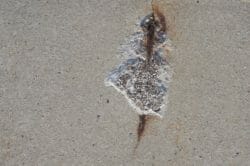
Rusting and exposed rebar tin can reduce the structural strength of concrete. This can upshot in cracks and weakened foundations and slabs, besides equally leaks in basement walls.
Although physical is a very durable material and is great for supporting huge amounts of weight; it's non great for tensile strength unless it has reinforcing in it, such as rebar.
Crack and Rebar Problems
Trouble #1 – Rusting rebar loses structural strength
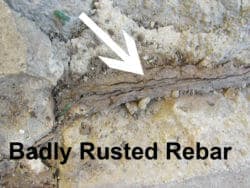
As rebar rusts, it slowly loses its strength and deteriorates. As it rusts, information technology expands in book and this places tremendous force per unit area on the concrete that is roofing the rebar.
Rusting rebar tin can expand up to 4 times its diameter – resulting in croaky and damaged physical
As the rebar rusts, the strength of the bail between the rebar and the concrete deteriorates which ultimately results in weaker concrete. Also, corrosion and pitting contribute to structural fatigue.
Problem #ii – Spalling: chunks of concrete breaking off
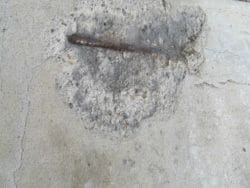
Spalling, or chunks of concrete popping or falling off, generally occurs because of:
- Mechanical impairment – i.e. the concrete being hit past a hard metal object with a lot of force.
- Forces of rusting rebar pushing confronting the physical – As we take noted, rusting rebar exerts tremendous pressure against the concrete which may crusade cracks or pieces of the physical to break loose.
Problem #3 – Shrinkage cracks that allow moisture to attain the rebar
Shrinkage cracks are probably the most common blazon of cracks in concrete. When physical is outset mixed and poured, it has excess water in information technology and in the hardening process, the concrete loses its excess water which causes shrinkage cracks.
If as well much h2o was added, and so the cracking may become an issue. First, the concrete will be weaker and secondly, the shrinkage cracks may exist larger and allow moisture to attain the rebar.
Problem #iv – Inadequate concrete coverage over the rebar
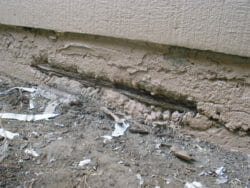
Building codes have requirements on how close rebar may be to the earth (soil) as well as how close information technology may be to physical forms. The distances vary upon the location and size of the rebar.
Mutual rebar sizes used in residential construction for houses are usually in sizes ranging from #3 rebar to #6 rebar. # 4 rebar has a bore of 1/2 inch (iv/8 of an inch) or #5 rebar is 5/8 of an inch in diameter.
Clearances and coverage on rebar
Rebar generally should be encased or covered with concrete and in almost instances, there are code requirements that establish guidelines. At times rebar may shift out of position when the concrete is beingness poured and therefore it doesn't become proper coverage.
In general, rebar in residential structure needs to take 3 inches of concrete cover or separation from soil when the physical for footings and pads is poured against soil and if poured against forms, 1½ inch. If formed concrete not exposed to earth or conditions like in slabs and walls, then ¾ of an inch is required. Annotation, that there are many requirements nigh weather condition and clearances.
Rust stains or a pattern of cracks
If a physical wall or floor has rust stains near cracks, the rebar is usually rusting. When this condition is observed information technology would exist wise to determine the source of the wet and do maintenance and repair.
If there is a pattern to the cracks (i.e. rectangle or square), then the rebar may be besides close to the surface of the concrete. Over again, maintenance and repair are wise.
Basically, if there is no coverage or improper coverage then the rebar may exist exposed to excessive moisture and rust.
Problem #5 – Rock pockets may expose rebar to wet
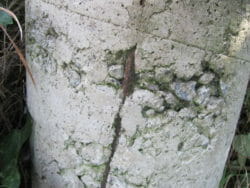
Concrete that was not placed or vibrated properly may accept stone pockets and exposed rebar. Often this problem occurs when the concrete was poured too dry considering not enough water was added to the concrete when information technology was being mixed. This condition may issue in rebar rusting and damaging the concrete.
In the photo, the physical was poured also dry and not properly vibrated.
Problem #vi – If no rebar in physical, then ane side of a crack may rising above the other side: i.e. in a garage flooring
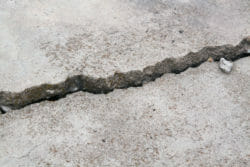
If in that location is no rebar in a physical garage flooring, then i side of a fissure may be higher than the other side of the fissure. Without rebar, there is a trend for cracks to grow large.
Houses built before or during the 1950s and '60s
In many areas of the country, homes that were built during or before the '50s and '60s may non have rebar in their physical slabs. These homes may have cracks running through a number of flooring tiles, mirroring cracks in the concrete below the tiles.
In these homes, it is not uncommon to pull up carpet or other flooring materials and find cracks, and often many cracks. These cracks can be patched or repaired but other cracks will probably appear, especially in areas that accept expansive soils or gradient creep.
Cracks without rebar are more probable to become a trip hazard
As previously stated, a lack of rebar in a slab will be more likely to allow 1 side of a crack to rising higher up the other side. This status oftentimes creates a trip run a risk. Inspectors will ofttimes consider a summit differential of a 1/4 inch or more to be a trip and safety concern.
Trip hazards may be found on garage floors, business firm floors, walks, patios, and driveways.
Why does rebar rust or corrode?
- When the passive protective layer over the rebar breaks downwards, i.e. the cementitious materials go past the surrounding rebar, so chemical, carbonation, and chloride issues start the rusting process.
- Diverse pollutants in the air, freezing and thawing, moisture in the air (especially in littoral areas), salt and de-icing compounds, and aggressive soils tin likewise atomic number 82 to corrosion and rusting rebar.
- Exposure to excessive wet and various chemical compounds can cause harm to concrete and rebar under a number of circumstances.
Why is rebar put in physical?
Two of the main reasons are:
- Reduce bang-up in the concrete
- Add structural strength, especially tensile strength
Other reasons for rebar in concrete
- Helps to proceed one side of a crack from rising above the other side
- Can necktie ii separate sections or pieces of concrete together (i.east. at cold joints)
- Ability to reduce the thickness of concrete. With rebar in a slab or wall, in that location may be less concrete required, and the concrete may non need to be as thick
- Can help distribute the weight or load on the concrete to a larger surface area
- Helps concord the concrete together when it expands and contracts
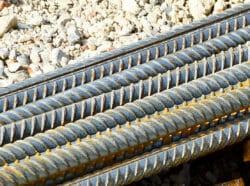
Why does rebar take ribs on it
The small ribs on rebar serve several purposes.
- They add more expanse to the rebar which gives the paste in the concrete a greater surface area for bonding.
- The ridges provide for stronger mechanical anchoring to the concrete.
- The ridges aid hold different pieces of rebar in identify when pouring the concrete so they exercise not sideslip out of position, even though they're tied to one another.
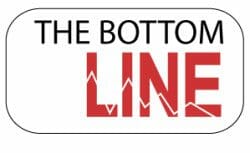
Improperly placed rebar or rebar exposed to moisture may rust and this may weaken or impairment the physical. At times, significant damage tin can result from this and can be costly to repair.
Homeowners who accept rusted or exposed rebar should perform maintenance and repairs. Occasionally an engineer may need to be consulted if there is significant rusting, spalling or damaged concrete. Fortunately, the majority of the time maintenance is the only thing necessary.
In some of our articles we provide links to products that may exist benign given the subject matter of the content. We receive a small commission if you choose to purchase a product or service later following ane of our affiliate links but the price is the same for you.
lasterwastold1981.blogspot.com
Source: https://buyersask.com/structural/rebar-problems-in-concrete-foundations-slabs-and-walls/
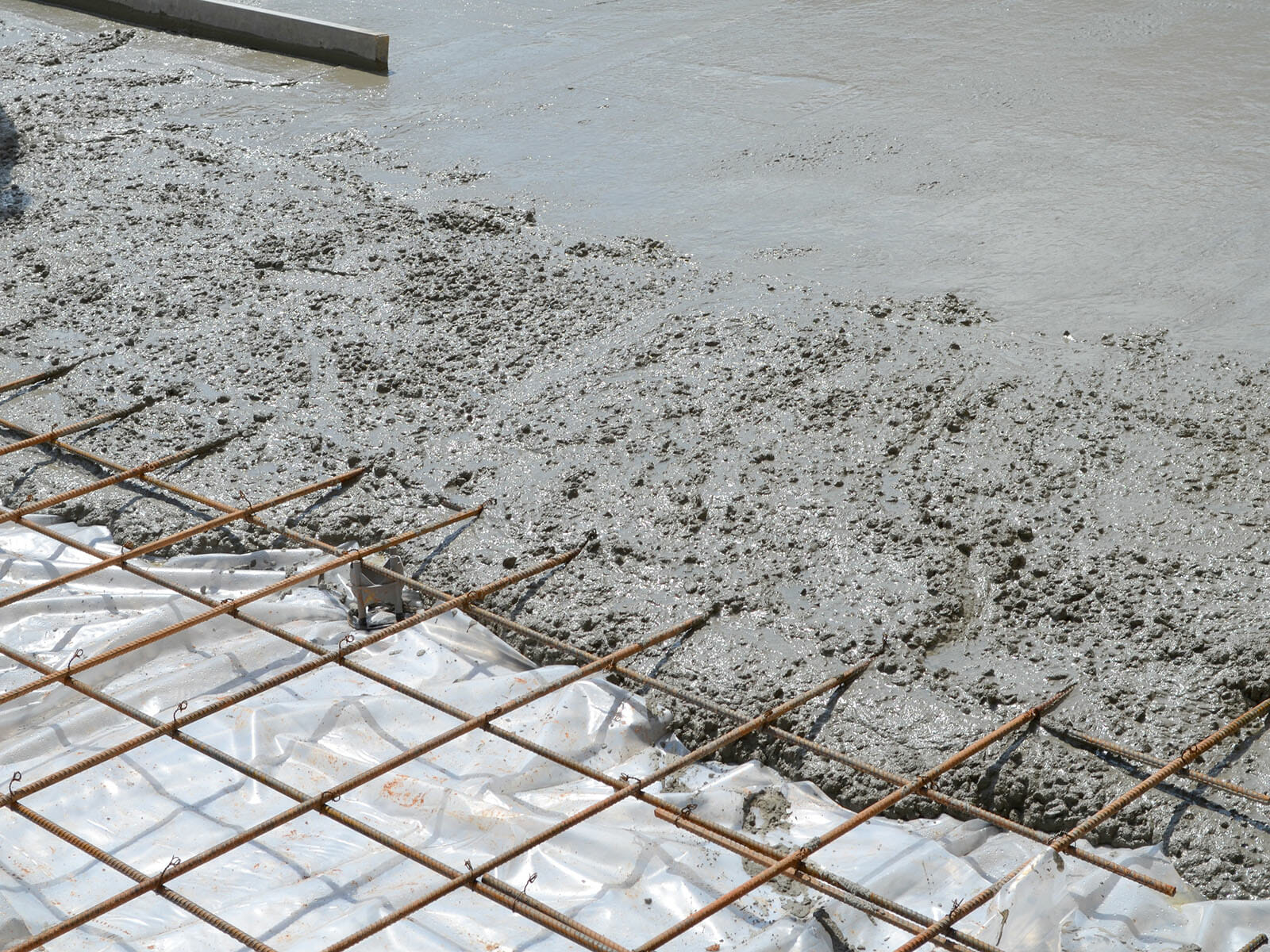
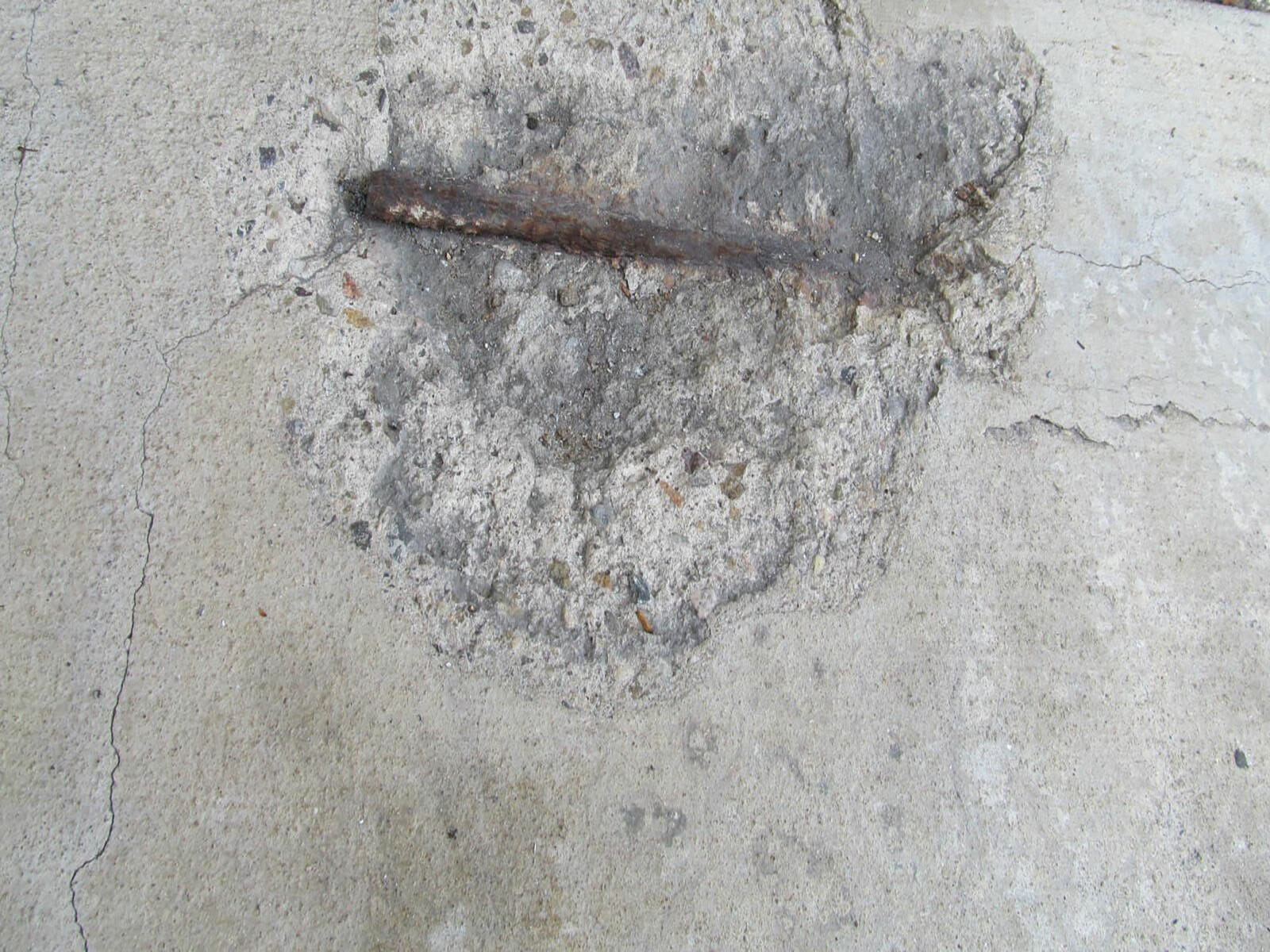
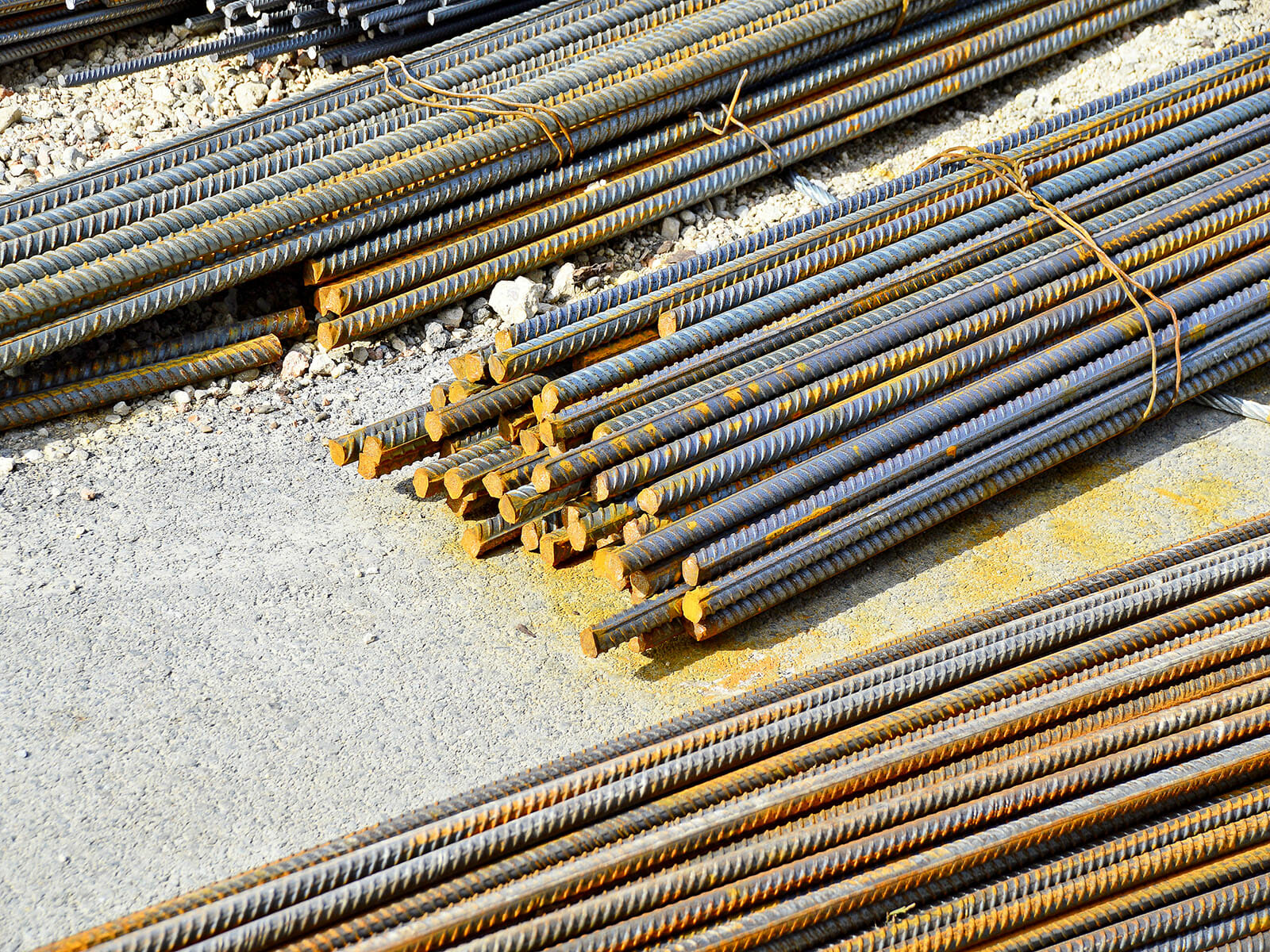

0 Response to "at what point will rebar expand due to a fire in an 8 in wall to be detrimental"
Post a Comment